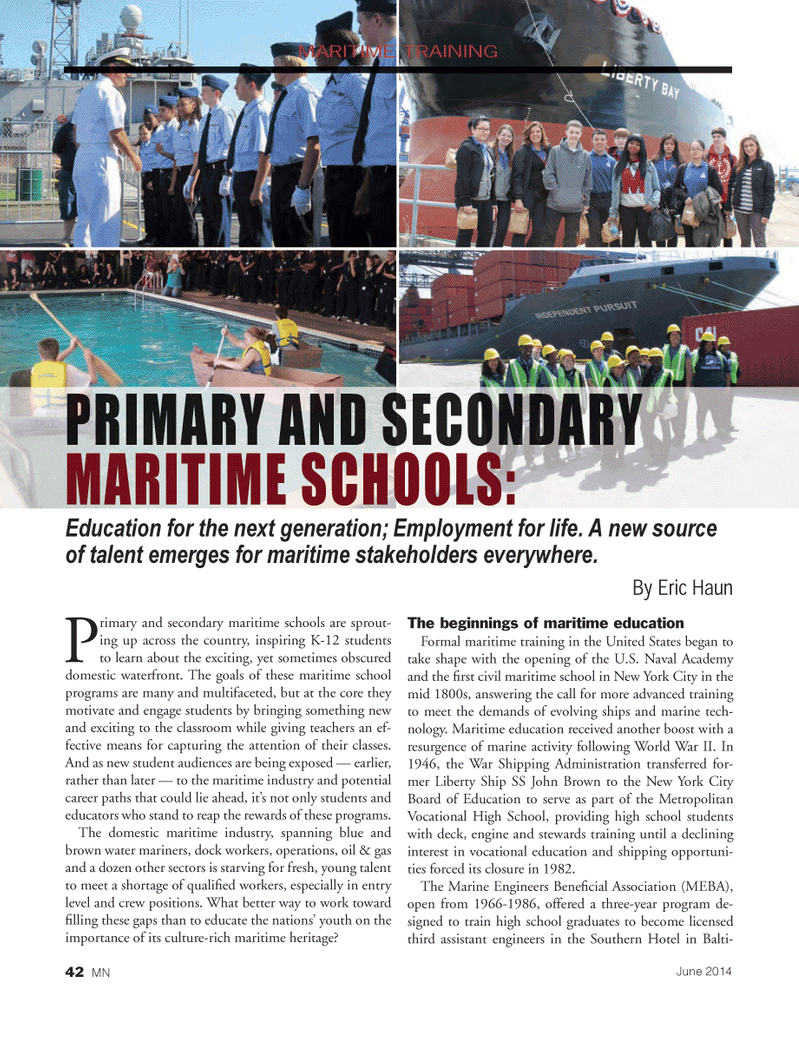
Page 42: of Marine News Magazine (June 2014)
Dredging & Marine Construction
Read this page in Pdf, Flash or Html5 edition of June 2014 Marine News Magazine
Primary and secondary maritime schools are sprout- ing up across the country, inspiring K-12 students to learn about the exciting, yet sometimes obscured domestic waterfront. The goals of these maritime school programs are many and multifaceted, but at the core they motivate and engage students by bringing something new and exciting to the classroom while giving teachers an ef- fective means for capturing the attention of their classes. And as new student audiences are being exposed ? earlier, rather than later ? to the maritime industry and potential career paths that could lie ahead, it?s not only students and educators who stand to reap the rewards of these programs. The domestic maritime industry, spanning blue and brown water mariners, dock workers, operations, oil & gas and a dozen other sectors is starving for fresh, young talent to meet a shortage of quali ed workers, especially in entry level and crew positions. What better way to work toward lling these gaps than to educate the nations? youth on the importance of its culture-rich maritime heritage? The beginnings of maritime educationFormal maritime training in the United States began to take shape with the opening of the U.S. Naval Academy and the rst civil maritime school in New York City in the mid 1800s, answering the call for more advanced training to meet the demands of evolving ships and marine tech- nology. Maritime education received another boost with a resurgence of marine activity following World War II. In 1946, the War Shipping Administration transferred for- mer Liberty Ship SS John Brown to the New York City Board of Education to serve as part of the Metropolitan Vocational High School, providing high school students with deck, engine and stewards training until a declining interest in vocational education and shipping opportuni- ties forced its closure in 1982. The Marine Engineers Bene cial Association (MEBA), open from 1966-1986, offered a three-year program de- signed to train high school graduates to become licensed third assistant engineers in the Southern Hotel in Balti- MARITIME TRAININGPRIMARY AND SECONDARY MARITIME SCHOOLS: Education for the next generation; Employment for life. A new source Education for the next generation; Employment for life. A new source of talent emerges for maritime stakeholders everywhere. of talent emerges for maritime stakeholders everywhere. By Eric Haun By Eric Haun 42 MNJune 2014MN June14 Layout 32-49.indd 42MN June14 Layout 32-49.indd 425/20/2014 10:23:47 AM5/20/2014 10:23:47 AM

 41
41

 43
43
